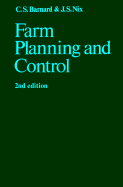Book contents
- Frontmatter
- Contents
- Notice to readers
- Preface to the first edition
- Preface to the second edition
- Selected metric conversion factors
- Part I The organisation of resources
- Part II The organisation of enterprises
- Part III The combination of enterprises
- 13 Principles and procedures in planning enterprise combination
- 14 Budgeting and programme planning
- 15 Linear programming
- 16 Uncertainty and farm organisation and planning
- 17 Further programming techniques
- 18 Matrix construction
- Part IV The control of resources and enterprises
- Selected further reading
- Index
18 - Matrix construction
Published online by Cambridge University Press: 01 June 2011
- Frontmatter
- Contents
- Notice to readers
- Preface to the first edition
- Preface to the second edition
- Selected metric conversion factors
- Part I The organisation of resources
- Part II The organisation of enterprises
- Part III The combination of enterprises
- 13 Principles and procedures in planning enterprise combination
- 14 Budgeting and programme planning
- 15 Linear programming
- 16 Uncertainty and farm organisation and planning
- 17 Further programming techniques
- 18 Matrix construction
- Part IV The control of resources and enterprises
- Selected further reading
- Index
Summary
Although matrix construction is considered in this chapter mainly from the viewpoint of linear programming, much of it is fundamental to many of the other techniques discussed in Chapter 17, such as multiperiod linear programming, parametric programming, quadratic programming and Monte Carlo simulation. Indeed, some of its basic aspects are also applicable to programme planning.
As was seen in Chapter 15, matrix construction concerns the translation of farm resource – enterprise relationships into a series of mathematical equations that are suitable for processing by computer, and the fundamental problem of the planner is to ensure that such relationships are expressed realistically. In attempting to do this, two points should be kept in mind. First, the purpose of a matrix is not to detail every facet of farm organisation but simply to represent its essential features. Secondly, solutions are not meant to provide management with detailed blueprints of desirable courses of action, but rather to point the way to adjustments that are likely to prove profitable.
This chapter begins by considering the basic relationships between resources and activities and the functions performed by the latter. It then turns, more specifically, to operations with the major resources.
- Type
- Chapter
- Information
- Farm Planning and Control , pp. 439 - 492Publisher: Cambridge University PressPrint publication year: 1980

